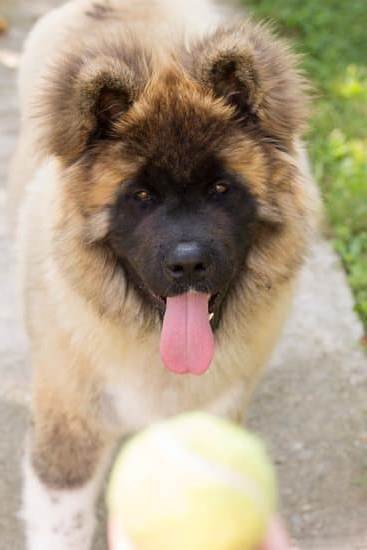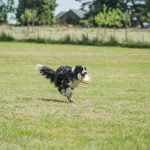Stray dogs can often be misunderstood due to their unique background and experiences. When it comes to house training a stray dog, understanding their behavior is crucial in helping them adjust to their new environment. Knowing how to house train a stray dog involves patience, consistency, and positive reinforcement techniques.
One of the key factors in successfully house training a stray dog is to have patience. Recognize that these dogs may have had limited or no previous training, which can make the process more challenging. By approaching the training with understanding and patience, you can effectively help your new furry friend learn the ropes of indoor living.
Creating a safe and comfortable space for your stray dog is essential in aiding their adjustment. Providing a designated area with bedding, toys, and food/water bowls can help them feel secure. Additionally, establishing a routine for feeding and potty breaks can assist in teaching them where and when they should do their business. By setting up a structured environment, you are setting your stray dog up for success in their house training journey.
The Importance of Patience in House Training Stray Dogs
House training a stray dog may require a lot of patience and understanding. Stray dogs, especially those that have never been in a home environment before, may be unfamiliar with the concept of potty training.
It is important to remember that these dogs may have had different experiences and challenges in the past, which can impact their behavior in a new setting. By being patient and gentle, you can help your stray dog adjust to their new surroundings and learn how to behave appropriately in your home.
When house training a stray dog, it is crucial to create a safe and comfortable space for them to feel secure. This area should be designated specifically for your new furry friend, equipped with their own bed, toys, food, and water.
Creating a space that belongs solely to the dog can help them feel more at ease and provide boundaries for where they are allowed to eat, sleep, and play. Additionally, having a safe space for the dog can aid in establishing routine and structure, which are essential components of successful house training.
To foster a positive environment for house training a stray dog, it is important to establish a feeding schedule that suits both your lifestyle and the needs of the dog. Feeding the dog at set times during the day can help regulate their digestion and bathroom habits, making it easier for you to anticipate when they will need to go outside.
Providing consistent meals also allows you to monitor their food intake and track any changes in appetite or behavior that may indicate health issues. By following these simple steps and showing patience throughout the process, you can successfully house train a stray dog and integrate them into your home with love and care.
- Understanding the behavior of stray dogs
- Setting up a safe and comfortable space for your stray dog
- Creating a feeding schedule for house training
Setting Up a Safe and Comfortable Space for Your Stray Dog
When bringing a stray dog into your home, it is crucial to create a safe and comfortable space for them to feel secure. This designated area will not only serve as their sanctuary but also help in the house training process. Here are some tips on how to set up the perfect space for your stray dog:
- Choose a quiet area in your home where your stray dog can have some privacy and feel at ease.
- Provide a cozy bed or blanket for them to rest on, as well as a few toys to keep them entertained and engaged.
- Make sure the space is free from any hazards or potential dangers that could harm your new furry friend.
Establishing this safe haven will give your stray dog a sense of security, making it easier for them to adjust to their new surroundings and begin the house training process.
In addition to providing a safe space for your stray dog, it is important to consider their emotional needs as well. Stray dogs may have experienced trauma or neglect in the past, so patience and understanding are key when helping them settle into their new environment. By creating a peaceful and welcoming space for your furry companion, you are laying the foundation for successful house training and building trust between you and your new pet.
Remember that every dog is unique, so take the time to observe your stray dog’s behavior and preferences during this transition period. By catering to their individual needs and creating a comfortable environment, you can set the stage for a successful house training journey with your new four-legged friend.
Creating a Feeding Schedule for House Training
Feeding your stray dog on a consistent schedule is crucial when it comes to house training. By creating a routine for meals, you can also predict when your furry friend will need to go potty, making the training process easier for both of you. Here’s how to establish a feeding schedule for your new companion.
Determine the Right Amount of Food
Before setting up a feeding schedule, it’s essential to figure out the appropriate amount of food for your stray dog. Consult with a veterinarian to get recommendations based on the dog’s size, age, and activity level. Overfeeding can lead to accidents in the house, so be mindful of portion sizes.
Choose Specific Meal Times
Once you know how much food your stray dog needs, decide on specific meal times that align with your daily routine. Dogs thrive on consistency, so try to feed them at around the same times each day. This will help regulate their metabolism and make it easier to anticipate when they’ll need bathroom breaks.
Stick to the Schedule
Consistency is key when it comes to creating a feeding schedule for house training a stray dog. Avoid free-feeding or leaving food out all day since this can disrupt their bowel movements and bladder control. By sticking to the established meal times, you can help your furry friend develop good eating habits while also aiding in potty training efforts.
Establishing a Routine for Potty Breaks
Creating a Schedule
To start, create a schedule for potty breaks based on your dog’s age, size, and breed. Puppies, for example, may need to go out more frequently than adult dogs. Take your stray dog outside first thing in the morning, after meals, before bedtime, and several times throughout the day. By sticking to a routine, you’ll help your dog learn when it’s time to go potty outside.
Recognizing Signs
Watch out for signs that your stray dog needs to go potty such as sniffing around, circling, or pacing. If you notice these behaviors, take your dog outside immediately to their designated bathroom spot. By being attentive and responsive to your dog’s cues, you’ll reinforce the idea that going outside is the appropriate place to relieve themselves.
By establishing a routine for potty breaks and being observant of your stray dog’s behavior and needs, you can effectively house train them. Remember that patience is key during this process – with time and consistency in training methods, your furry friend will soon understand where they should do their business within your home.
Using Positive Reinforcement Techniques for Training
When it comes to house training a stray dog, positive reinforcement techniques are essential for effective training. Positive reinforcement involves rewarding your dog for good behavior, which encourages them to repeat that behavior in the future. This method is especially important when working with stray dogs, as they may have had negative experiences in the past. By using positive reinforcement techniques, you can build trust and create a strong bond with your new furry friend.
One of the most common ways to implement positive reinforcement is through treats. When your stray dog follows a command or exhibits good behavior, immediately reward them with a treat. This helps them associate the action with a positive outcome and motivates them to continue behaving in that manner. Additionally, praise and affection are powerful tools for reinforcing good behavior. Use verbal cues such as “good dog” or petting to show your appreciation when your stray dog does something right.
Consistency is key when using positive reinforcement techniques for training a stray dog. Make sure to always reward good behavior promptly and avoid inadvertently reinforcing bad behavior by withholding attention or treats. Remember that every dog learns at their own pace, so be patient and consistent in your approach. With time and dedication, you will see progress in your stray dog’s house training journey.
| Positive Reinforcement Techniques for Training | House Training Tips |
|---|---|
| Reward good behavior with treats | Be patient and consistent |
| Use praise and affection as motivation | Avoid reinforcing bad behavior unintentionally |
Dealing With Accidents Gracefully
Dealing with accidents is an inevitable part of house training a stray dog. It is essential to approach these situations with patience and understanding, as accidents are a natural part of the learning process for both the dog and the owner. Instead of becoming frustrated or angry, it is important to remain calm and address the situation calmly.
When accidents happen, it is crucial not to scold or punish your stray dog. This will only create fear and confusion, leading to setbacks in the house training process. Instead, focus on cleaning up the mess thoroughly using an enzymatic cleaner designed specifically for pet accidents. This will help remove any lingering scent that may attract your dog back to the same spot.
In addition to cleaning up accidents promptly, it is also important to monitor your stray dog’s behavior closely for any signs that they need to go outside. By recognizing these cues, such as pacing, whining, or circling, you can proactively take them outside before they have an accident indoors. This proactive approach can help prevent accidents and reinforce positive potty habits in your stray dog as they continue to learn how to house train properly.
Gradually Introducing Your Stray Dog to the Rest of Your Home
Introducing a stray dog into your home can be a rewarding experience, but it’s crucial to proceed with caution. When it comes to gradually introducing your new furry friend to the rest of your home, patience is key. Start by confining the dog to one specific area of your house, such as a single room or a designated space with a baby gate. This will allow the dog to acclimate slowly to its new environment without feeling overwhelmed.
As the stray dog becomes more comfortable in its designated area, gradually expand its access to other parts of your home. It’s important to supervise these introductions closely and pay attention to the dog’s body language for any signs of stress or anxiety.
If the dog shows signs of distress, give it some time to adjust before trying again. Remember that every dog is different and may take varying amounts of time to feel at ease in a new environment.
Additionally, make sure that the rest of your home is safe and secure for your new furry companion. Remove any potential hazards or toxic substances that the dog may come into contact with, and provide plenty of toys and enrichment activities to keep it mentally stimulated. By taking these steps and allowing your stray dog time to explore at its own pace, you can ensure a smooth transition into its new forever home.
| Behavior | Information |
|---|---|
| Patience | Key factor in introducing stray dogs to new environments |
| Supervision | Important while allowing access to other parts of the home |
| Safety | Ensure a safe environment by removing hazards and providing toys |
Consistency Is Key
House training a stray dog can be a challenging but rewarding experience. Understanding the behavior of stray dogs is crucial in successfully house training them. Patience is key when it comes to teaching a stray dog new habits and routines. It may take time for them to adjust to their new environment and feel comfortable with the training process.
Setting up a safe and comfortable space for your stray dog is essential in creating a positive environment for learning. Providing a designated area for eating, sleeping, and playing will help establish boundaries and routines. Consistency in feeding schedules and potty breaks will also aid in house training efforts. By establishing a routine, your stray dog will learn what is expected of them and when.
Using positive reinforcement techniques is an effective way to encourage good behavior in your stray dog. Rewarding them with treats, praise, or playtime when they successfully follow commands or use the designated potty area will reinforce desired behaviors. It’s important to remain patient and understanding, especially when accidents occur. Dealing with accidents gracefully by cleaning up promptly and not scolding your dog will maintain a positive learning environment.
In conclusion, maintaining good house training habits requires consistency and patience. Gradually introducing your stray dog to the rest of your home while monitoring their behavior will help ensure successful integration into your family life. By following these tips on how to house train a stray dog, you can build a strong bond with your furry friend while promoting good habits for years to come.
Frequently Asked Questions
Can a Stray Dog Be Potty Trained?
Yes, a stray dog can be potty trained with patience, consistency, and positive reinforcement. It may take some time for the dog to unlearn old habits and adapt to a new routine, but it is definitely possible with the right approach.
How Do You Train a Stray Dog at Home?
Training a stray dog at home requires creating a structured environment, establishing a routine, and using positive reinforcement techniques such as treats and praise. Building trust and forming a bond with the dog are also important in the training process to help them feel safe and secure in their new home.
How Do You Potty Train an Abandoned Dog?
Potty training an abandoned dog involves following similar steps as with any other dog – setting up a designated potty area, taking the dog outside frequently, praising them for eliminating outside, and cleaning up accidents without reprimanding the dog. Consistency and patience are key when potty training an abandoned dog who may have never been properly trained before.

Welcome to the blog! I am a professional dog trainer and have been working with dogs for many years. In this blog, I will be discussing various topics related to dog training, including tips, tricks, and advice. I hope you find this information helpful and informative. Thanks for reading!





